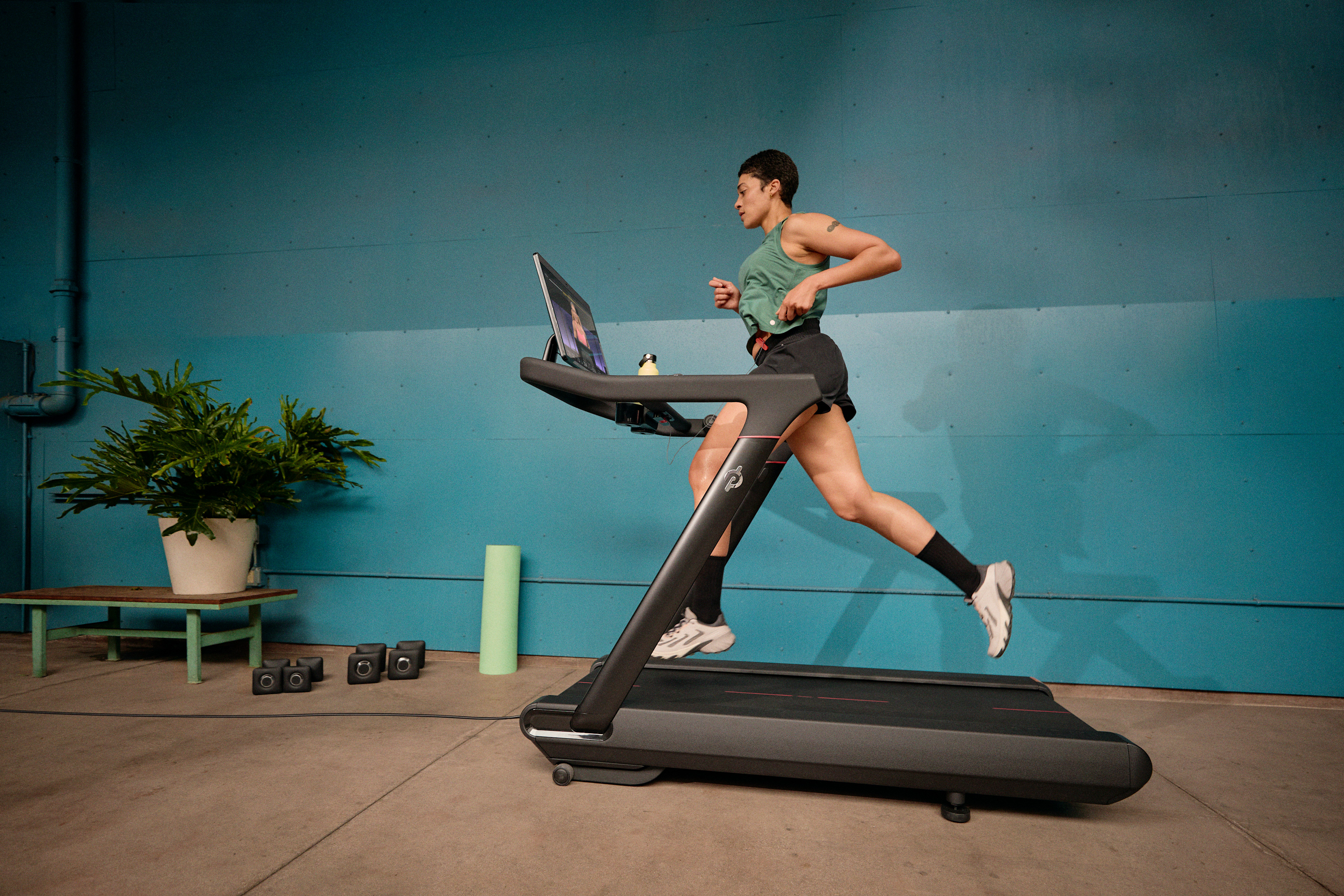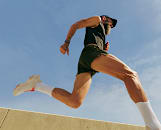
How to Use Speed Work to Supercharge Your Running Routine
This training style is key to becoming a stronger, faster runner.
By Jennifer Heimlich•
What, Exactly, Is Speed Work?
Benefits of Speed Work
5 Types of Speed Workouts to Try
How Much of Your Running Training Should Be Speed Work?
How to Make Speed Work Part of Your Running Routine
Peloton instructor Selena Samuela never skips speed work in her running routine. Even when she’s not actively training for a race, “I always incorporate at least one 20-minute HIIT-style run per week, and often I add a second longer interval-style run of 45 minutes to one hour,” she says. She’ll tweak the exact approach when she has a 5K or marathon on the calendar, but speed work is always a must.
Discover more ways to reach your goals with Peloton
Selena believes that just about all runners can benefit from this approach. “If you’re injured, skip speed days,” she says. “But other than that, you should always include them, in my opinion. The health benefits are too great!”
What makes speed work in running so magical? Well, there are a number of ways it can benefit your fitness and your overall health. (Not to mention, for many runners, it’s fun.) Read on to learn how these workouts can supercharge your running—and the best ways to harness all that they have to offer.
What, Exactly, Is Speed Work?
The term “speed work” is pretty straightforward: It’s any run that has you moving faster than your casual, easy pace. “Tempo runs, interval runs—anything that’s designed to help improve your speed,” Selena says. You can be very precise about it, hitting exact paces for a specific number of minutes or meters, or you can simply challenge yourself to go a little faster. It all counts.

Peloton App
Access thousands of classes with no equipment needed.
Benefits of Speed Work
Whether or not you’re attempting to PR your next race, there’s a lot you can gain from speed work. For starters, Selena points out that doing speed work can improve your running economy, or how efficiently you can run at specific speeds. One 2018 study published in Physiological Reports found that 40 days of interval training improved runners’ economy not only during harder efforts (like a 10K race), but also during easier ones.
Part of the reason might be because when we run faster, we naturally move with better form and biomechanics. “Watch your stride improve with effective speed training,” Selena says. Bonus: Because of this, speed work can also help you avoid injury, she adds.
Unsurprisingly, speed work also improves—you guessed it—speed. “By challenging your body to work at a harder intensity, over time, your body will adapt to that,” says Summer Cook, PhD, an associate professor of kinesiology at the University of New Hampshire. You’ll not only be able to hit faster paces on race day, but your normal, easy pace will also become much faster, she says. One reason why? As a 2014 meta-analysis published in Sports Medicine found, interval training can improve your aerobic capacity by about eight percent, and it does this in significantly less time than moderate-intensity endurance runs.
Even if you don’t have any particular race goals and are just running to stay fit, sprinkling in some speed has a number of health benefits. “We need to put our bodies under more strain than what we’re accustomed to in order to see adaptations—in exercise science, we call that the principle of overload,” Cook says. “Anything that you're doing at a harder intensity is going to be beneficial to your heart, your lungs, your muscles, your bones, your nervous system.”

5 Types of Speed Workouts to Try
Speed work can look different from runner to runner, and even from week to week. “Your running plan will vary depending on your goals,” Selena says. “Are you training for a shorter or longer race, or just training to stay fit and live longer?” She recommends checking out Peloton’s race training programs to get expert-crafted plans that will guide you through which types of speed work to do and when. No matter which training plan you follow, here are some of the main types of speed workouts you’ll see.
Strides
One of the best ways for newbies to ease into speed work is by running strides. This is where you accelerate into about a 9 out of 10 effort for just 15 to 30 seconds, then gradually slow back down. Athletes will repeat this anywhere from four to 20 times as part of a longer run.
Because strides are so short, they don’t put a ton of stress on your body. But by running near max effort, you’ll naturally run with better biomechanics and train your neuromuscular system to move fast.
Strides aren’t just for beginners, though. Even pros use strides to fire up their neuromuscular system before a hard workout or race, or practice running fast on tired legs—without overly-fatiguing themselves—at the end of a run.
Fartleks
Another beginner-friendly form of speed work is Fartlek training. The term “Fartlek” means “speed play” in Swedish, and the idea is to incorporate short bursts of speed into a regular run. That could be as unstructured as running faster for a few seconds every time you pass a dog, or as deliberate as doing sets of two minutes at your 5K pace followed by three minutes of easy running. The key is just to keep running continuously as you mix up the paces.
This strategy exposes your body to some higher-intensity running in a low-key way. You’ll get your heart pumping harder and practice going faster, but you can simply dip into bursts of speed as you go rather than feeling pressure to hit specific splits.
Hill Workouts
Hill repeats are like speedwork in disguise: You might not actually be running any faster than usual, but by tackling an incline, you’re naturally amping up the intensity. Research shows this can effectively improve your aerobic fitness and sharpen up your running form.
The exact elevation and length of the hill can vary. As a general rule of thumb, find an incline that will have you running uphill for about 30 seconds to two minutes, and aim for at least four reps. As you get more used to hill running, you can add more reps and challenge yourself to tackle steeper grades for longer.
Interval Runs
The most classic form of speed work is interval training—running at a faster pace for a specific amount of time, then taking time to recover before you go again. These workouts can be as simple or as complex as you want, Cook says. You can do anything from 200-meter to one-mile repeats, running at a full-out sprint or a controlled but challenging speed. You can also measure your intervals in time rather than distance, running hard for two minutes, for example, then recovering for four.
“I like to make up my own workouts sometimes,” Cook says. For example, “I [might] feel like doing some longer intervals and some shorter ones. If you’re at a track, you can maybe do one lap hard and then take a rest, do two laps hard and work your way up to maybe four or five laps.” The key is to push past your comfort zone, then let your body (partially) recover before doing it again.
Tempo Runs
If you’re training for any kind of race, it helps to make tempo runs a regular part of your training. “It's where you run for anywhere from, say, two to 10 miles at a pace that’s probably a little bit faster than your half-marathon pace,” Cook says. “And you’re just trying to sustain that pace.” The idea is to hit a “comfortably hard” effort—your rate of perceived exertion should be about six to eight out of 10. You probably won’t be going as fast as you would during intervals, but the challenge comes from not taking any breaks. This can help you practice running stronger and faster for longer.
How Much of Your Running Training Should Be Speed Work?
As beneficial as speed work can be, it should only be one small part of your running routine. “There’s a general rule that 80 percent of your running should be fairly easy, and then 20 percent of your training should be speed work,” Cook says. For most of us, that works out to one or two speed runs per week, with the remainder made up of easy running, plus one long run and at least one rest day.
That might seem like a very limited amount of something that’s so beneficial, but faster running takes a toll on your body. “Every time you’re working much harder than you’re accustomed to, you need a lot of time to recover,” Cook says. If all you ever do is speed work, Cook says you might see some adaptations at first, but over time, it’ll negatively impact performance, mostly because you won’t have enough time in between to fully recover.
How to Make Speed Work Part of Your Running Routine
There are a few things you can do to make sure you’re getting the most out of your speed work—and keep it from getting the best of you.
For starters, don’t skip it just because it seems intimidating! “For a lot of novice runners, speed work is the part of training that gets overlooked,” Cook says. “But if they really want to see improvements in performance, speed work is going to be key.”
Just make sure your body is ready to pick up the pace. “Every run should start with a warmup and end with a cooldown, no excuses,” Selena says. This is especially essential for speed work because you’re putting extra stress on the body. Warm up with at least a 10-minute easy run, and do some dynamic stretches before you really get moving and grooving. Then, let your heart rate slowly come back down after the workout to help your body recover.
Also in the interest of keeping your body healthy, avoid doing speed work on back-to-back days. You want to give yourself enough time to recoup and repair from the previous session so it’s strong enough to go hard again.
Finally, as much as you pay attention to the faster parts of your speed sessions, don’t overlook the recovery intervals. One way to increase the challenge is to take less rest. “If you start decreasing the rest period between your intervals, it's going to train your body to be able to run faster during your racing,” Cook says.
The good news? Pretty much everyone can do speed work in a way that works for them. It’s just about scaling up or down based on your personal fitness and goals. So go ahead and step on the gas—and get ready to see your paces drop.
This content is for informational and educational purposes only and does not constitute individualized advice. It is not intended to replace professional medical evaluation, diagnosis, or treatment. Seek the advice of your physician for questions you may have regarding your health or a medical condition. If you are having a medical emergency, call your physician or 911 immediately.
Take your runs to the next level
Lace up and enter your email to get articles, instructor tips, and updates from Peloton sent to your inbox.
By providing your email address, you agree to receive marketing communications from Peloton.
For more about how we use your information, see our Privacy Policy.













